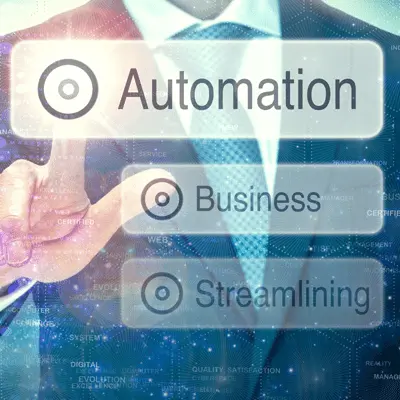Automation is no longer a future concept—it’s already deeply embedded in many areas of IT, from network management to cybersecurity operations. But how automation is implemented varies widely across organizations. There is no one-size-fits-all approach.
For many, automation shines in high-volume, repetitive tasks—answering low-level IT or HR questions, routing support tickets, or initiating basic troubleshooting steps. These use cases free up valuable staff time and improve response times. Some domains, like cybersecurity alert triage or automated data backup, are ideal candidates for automation because they involve repetitive tasks and require quick, consistent responses. On the other hand, areas like client intake in relationship-driven industries or complex HR decisions may benefit more from human oversight due to their nuanced, personalized nature.
The key is finding the right “flavor” of automation—Minimal, Hybrid, or Full-scale—for each domain. Below is a framework to help your organization think through the application of automation across three critical areas: IT infrastructure and security, data and analytics, and administrative operations.
| Automation Level | Networking, Security & Critical Infrastructure | Data Management & Analytics | Administration (HR, Ops, Client Intake) |
| 1. Little to No AutomationManual processes with high control and oversight. | – Manual firewall rules, patching, and monitoring- No auto-response to threats- Change management is fully manual | – Spreadsheets and manual reports- No automated data pipelines- Human-executed queries | – Manual onboarding, scheduling, and form processing- Emails and paper forms- No self-service portals |
| Best For | High-regulation environments or early-stage teams | Accuracy-critical tasks or low-volume orgs | Small teams valuing personalization |
| 2. Hybrid AutomationAutomation for routine tasks, human control for complex decisions. | – Automated detection with human-in-the-loop response- Network-as-Code with approval gates- Monitoring with alert escalation | – Scheduled ETL and dashboarding- Analysts interpret data, update models- Automated notifications and QA rules | – ATS sorts resumes, HR vets top picks- Automated onboarding forms- Self-service scheduling with human review |
| Best For | Mid-sized orgs needing efficiency + control | Teams modernizing data flows | Scaling firms wanting efficiency + human touch |
| 3. Large-Scale AutomationAutonomous systems with minimal human intervention. | – AI-driven auto-response to cyber threats- Self-optimizing networks- Infrastructure auto-scaling and healing | – Real-time ML decisions (fraud, pricing)- Autonomous anomaly detection- Continuous model updates | – Chatbots handle majority of queries- Fully digital onboarding/intake- Automated workflows and recordkeeping |
| Best For | Mature digital operations at enterprise scale | Real-time business operations or high-volume analytics | High-growth orgs minimizing admin overhead |
Conclusion: Match Automation to Value—Not Just Capability
While automation unlocks efficiency, it doesn’t always deliver ROI unless it’s aligned with business goals. That’s where Service-Level Management (SLM) comes in:
- Use SLM models to define measurable outcomes (e.g., incident response time, report delivery SLAs, onboarding turnaround).
- Compare the cost of automating a process vs. the value of meeting or exceeding the service level.
- Identify where manual effort is more cost-effective, such as:
- Low-frequency or low-risk tasks
- Processes with high customization needs
- Teams with fluctuating workloads that don’t justify fixed automation spend
By starting with clear SLAs and service thresholds, organizations can prioritize automation in high-impact areas—and avoid overspending in areas where simple process refinement or staff training may yield better results.



